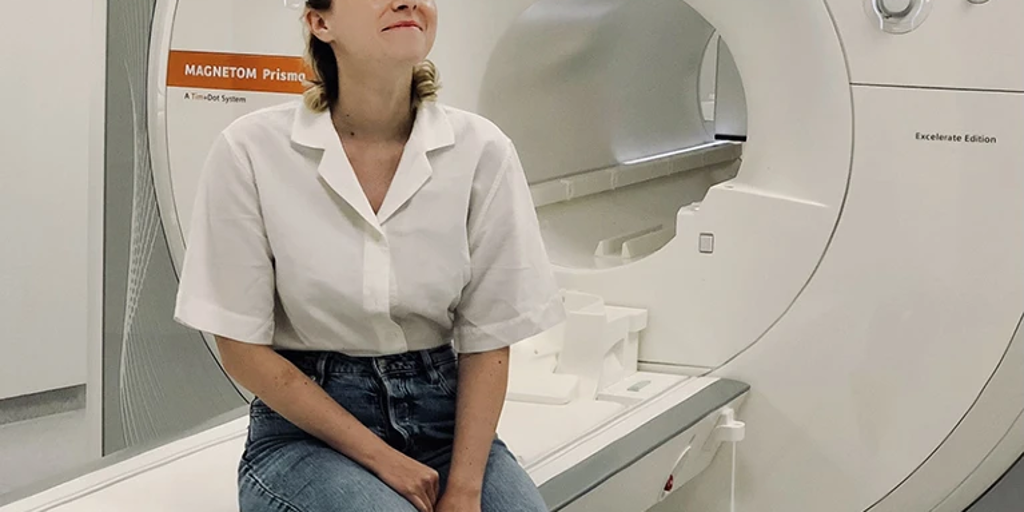Researcher scans her brain 75 times to find out how the brain responds to birth control

Neuroscientist Karina Heller is probably the most scanned woman in the history of neuroscience. Every morning for 75 days for a year, Heller underwent brain scans.
Her goal was not to become the most scanned woman, but something much more ambitious: study how your brain changes throughout your menstrual cycleboth in its natural state and under the influence of oral contraceptives.
Preliminary results from this study, which Heller presented at the annual meeting of the American Society of Neuroscience and compiled in a paper in the journal Nature, suggest that both brain morphology and connectivity change daily throughout the menstrual cycle. that birth control pills influence these changes.
Heller is among a growing group of researchers seeking to fill gaps in knowledge about women’s health, especially regarding oral contraceptives and their effects on the brain, a historically neglected area. Its goal is to collect more data that will allow women and doctors to make more informed decisions about the use of these drugs and which dosage forms may be most appropriate for each person. “We want to give women tools to better understand how their bodies and brains respond to birth control,” says Heller, a researcher at the University of Minnesota Twin Cities in Minneapolis.
Emily Jacobs, a neuroscientist at the University of California, Santa Barbara, and Heller’s collaborator, emphasizes the researcher’s dedication: “She dedicated herself to the science in an extremely rigorous experiment that gave us a new level of understanding of how the brain works.” human brain.” Through her personal experiments, Heller became a researcher and scientist, using her body to obtain data on how oral contraceptives affect brain structure and function.
Heller follows in the footsteps of other researchers such as Elizabeth Krastil.
Elizabeth Krastil’s team began studying changes in a woman’s brain during pregnancy. To do this, Krastil underwent 26 magnetic resonance imaging (MRI) scans and blood tests, which began three weeks before conception and continued through three trimesters of pregnancy, up to two years after the birth of the child.
This UC Irvine researcher admitted that “the opportunity to contribute to science as a neuroscientist, knowing how much we still don’t understand, was the most exciting thing. I decided to say “let’s do this” and get pregnant and see what happened. It was amazing to see the changes in my own brain, but also to know that nothing was wrong. “I was able to feel these changes, become a mother and realize that this is all part of life and nature.”
“This study is groundbreaking because it shows how the brain changes week by week, from before pregnancy to two years after birth,” said Jacobs, from the University of California, Santa Barbara, and one of the authors of the study, published via several months. back in Natural Neuroscience.
Contraceptives
Oral contraceptives, introduced in the 1960s, changed the lives of millions of people by regulating the menstrual cycle and preventing pregnancy using synthetic hormones such as progesterone and estrogen. Despite its widespread use by more than 150 million women, little is known about its effects on the brain. Data on its psychological effects are contradictory: some people experience a decrease in anxiety and depression, while others report the opposite, without clarity about the reasons. This is especially concerning because many women begin using them during puberty, a key period in brain development.
Most neuroimaging studies involve using magnetic resonance imaging (MRI) to examine the brains of 10 to 30 participants, which are scanned only once or twice. This approach, although effective, does not reflect the daily dynamics that the brain experiences throughout the menstrual cycle.
To address this limitation, Heller turned to a methodology known asdense sampling“, which involves performing multiple scans on the same person or small group over an extended period. This system produces a more detailed data set, revealing subtle changes that might otherwise go undetected in more traditional studies. Although dense sampling poses a challenge when working with a limited sample of people, the careful observations it generates provide invaluable information about brain processes.
Heller underwent three rounds of extensive brain scans
In his case, Heller underwent three rounds of extensive brain scans. In the first stage, you had 25 scans over five weeks, taking images of your brain at different stages of your natural menstrual cycle. She then started taking oral contraceptives and waited three months to make sure her body adjusted to the drugs. He then had 25 new scans. Finally, stopped taking the tablets, waited another three months and had a final series of 25 scans.. At the same time, after each scan, he had blood drawn and filled out questionnaires about his mood to link his hormonal and emotional responses to the changes observed in his brain.
Preliminary results reveal a rhythmic pattern of changes in brain volume and connectivity across the menstrual cycle. While on the pill, the volume and connectivity between certain brain regions decreased slightly, but these changes did not necessarily correlate with “better” or “worse” brain function. Once she stopped taking birth control, the brain structure largely returned to its natural state, suggesting that the brain is highly adaptable.

Laura Pritchett
Heller’s research is inspired by the work of Laura Pritchett, a cognitive neuroscientist at the University of Pennsylvania, who scanned her own brain for 30 straight days without taking birth control and another 30 days while taking it, in a study she called “28andMe.” (referring to 28 days of a typical menstrual cycle).
The results revealed a rhythmic pattern of changes in brain volume and connectivity throughout the menstrual cycle.
Pritchett, who also collaborated on Elizabeth Crustil’s study of changes in a woman’s brain during pregnancy, published in the journalNature Neuroscienceobserved that higher estrogen levels increased the connectivity of important brain networks, such as the default neural network associated with dreams and memory. Progesterone, on the other hand, seemed to have the opposite effect.
In addition, Pritchett conducted a study with her husband called “28andHe”, in which she scanned him for 30 days in a row to better understand the hormonal fluctuations in the male brain. Although these studies only cover a few participants, they provide a very detailed data set that could be key to understanding individual differences in the brain’s response to birth control.
The next step in Heller’s research will be to compare her results with those of women with endometriosis, a painful disease that affects about 10% of women of reproductive age. His goal is to find out whether the hormonal fluctuations he observed in his own brain could be linked to the symptoms of the disease, which could shed light on its origins and possible treatments.
Heller and her team are at the forefront of an area of research that promises to improve our understanding of the female brain and the impact of contraceptives on its functioning. This work is not only innovative in its methodology, but also has the potential impact the future reproductive and neurological health of millions of women around the world.
According to Susana Carmona, a psychologist and doctor of neurobiology, and head of the neuromaternity research group at the Gregorio Marañon Hospital in Madrid, the goal of such studies is to “close the gap that exists in the scientific literature on how sex hormones modulate activity and the anatomy and connectivity of the brain.
Carmona recalls that only “0.5% of all published neuroimaging studies assess the effects of hormones at the brain level.”
Carmona is working in collaboration with Heller and Jacobs in various consortia to explore how to address the gap in research on women’s brain health.
